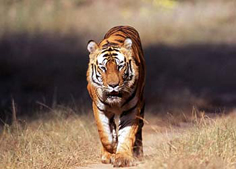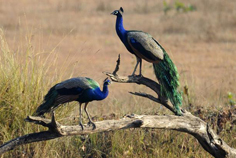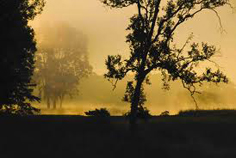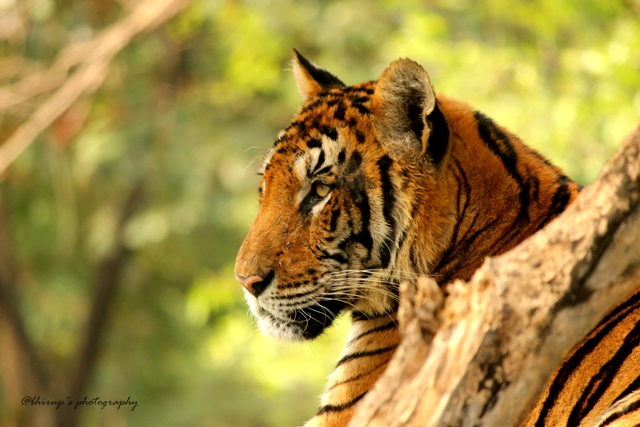
Kanha National Park is a national park and a Tiger Reserve in the Mandla and Balaghat districts of Madhya Pradesh, India. In the 1930s, Kanha area was divided into two sanctuaries, Hallon and Banjar, of 250 and 300 km² . Kanha National Park was created on 1 June 1955. Today it stretches over an area of 940 km² in the two districts Mandla and Balaghat. Together with a surrounding buffer zone of 1,067 km² and the neighboring 110 km² Phen Sanctuary it forms the Kanha Tiger Reserve."Kanha Tiger Reserve". Madhya Pradesh Forest Department. Retrieved 14 April 2010. This makes it the largest National Park in Central India The park has a significant population of Royal Bengal Tiger, leopards, the sloth bear, Barasingha and Indian wild dog. The lush sal and bamboo forests, grassy meadows and ravines of Kanha provided inspiration to Rudyard Kipling for his famous novel "Jungle Book”.

The lowland forest is a mixture of sal (Shorea robusta) and other mixed forest trees, interspersed with meadows. The highland forests are tropical moist dry deciduous type and of a completely different nature with bamboo on slopes (Dendrocalamus strictus). A very good looking Indian ghost tree (kullu) can also be seen in the dense forest..
Kanha Kisli Tiger Reserve abounds in meadows or maidens which are basically open grasslands that have sprung up in fields of abandoned villages, evacuated to make way for the animals. Kanha meadow is one such example. There are many species of grass recorded at Kanha some of which are important for the survival of Barasingha (Cervus duvauceli branderi). Dense forested zones with good crown cover have abundant species of climbers, shrubs and herbs flourishing in the understory. Aquatic plants in numerous "tal" (lakes) are life line for migratory and wetland species of birds. |

Kanha Tiger Reserve abounds in meadows or medians which are basically open grasslands that have sprung up in fields of abandoned villages, evacuated to make way for the animals. Kanha meadow is one such example. There are many species of grass recorded at Kanha some of which are important for the survival of Barasingha (Cervus duvauceli branderi). A dense forested zone with good crown cover has abundant species of climbers, shrubs and herbs flourishing in the understory. Aquatic plants in numerous "tal" (lakes) are life line for migratory and wetland species of birds..
A trip to Kanha Reserve directly takes you to the widespread arena of the lush habitat of wild creatures. With elephant and jeep safari an encounter to all these species is really generous and worthwhile. With jungle safari you can take a closer look to the wild animals and can capture their magnanimous images in your cameras.
The Kanha National Park is surely a paradise for the wild species that brings the natural habitat for them. A location which is filled with large varieties of fauna out of which the jungle is best known for Barasingha, the swamp deer and is famously called 'the jewel of Kanha'. The tiger tour is perfectly a great option for the nature lovers in Kanha.
Kanha National Park (Kanha + Kanha National Park + Kanha Tiger Reserve + Morning Timings + Evening Timings) |
||
Kanha National Park |
Morning Timing |
Evening Timing |
July To September (Every Year) Buffer Zone |
06: 00 AM |
10:00 AM |
October to January (Every Year) |
06:30 AM |
10:30 AM |
February to June (Every Year) |
06:00 AM |
10:00 AM |
Safari Rates |
Rs.8500 Per Jeep |
Rs.8500 Per Jeep |

 |
 Rating: 4.9 - 1243 votes Rating: 4.9 - 1243 votesKanha National Park - Guest Reviews Rated 4.9 / 5 based on 415 bookings Good - 100 % of our customers recommend this This agency provide best and budget booking for Kanha National Park, they had also provide budget resort in Kanha and also book jungle jeep safari Kanha Tiger Reserve for us, highly recommended..." – Susanta Dey, Kolkata Read more reviews >> |